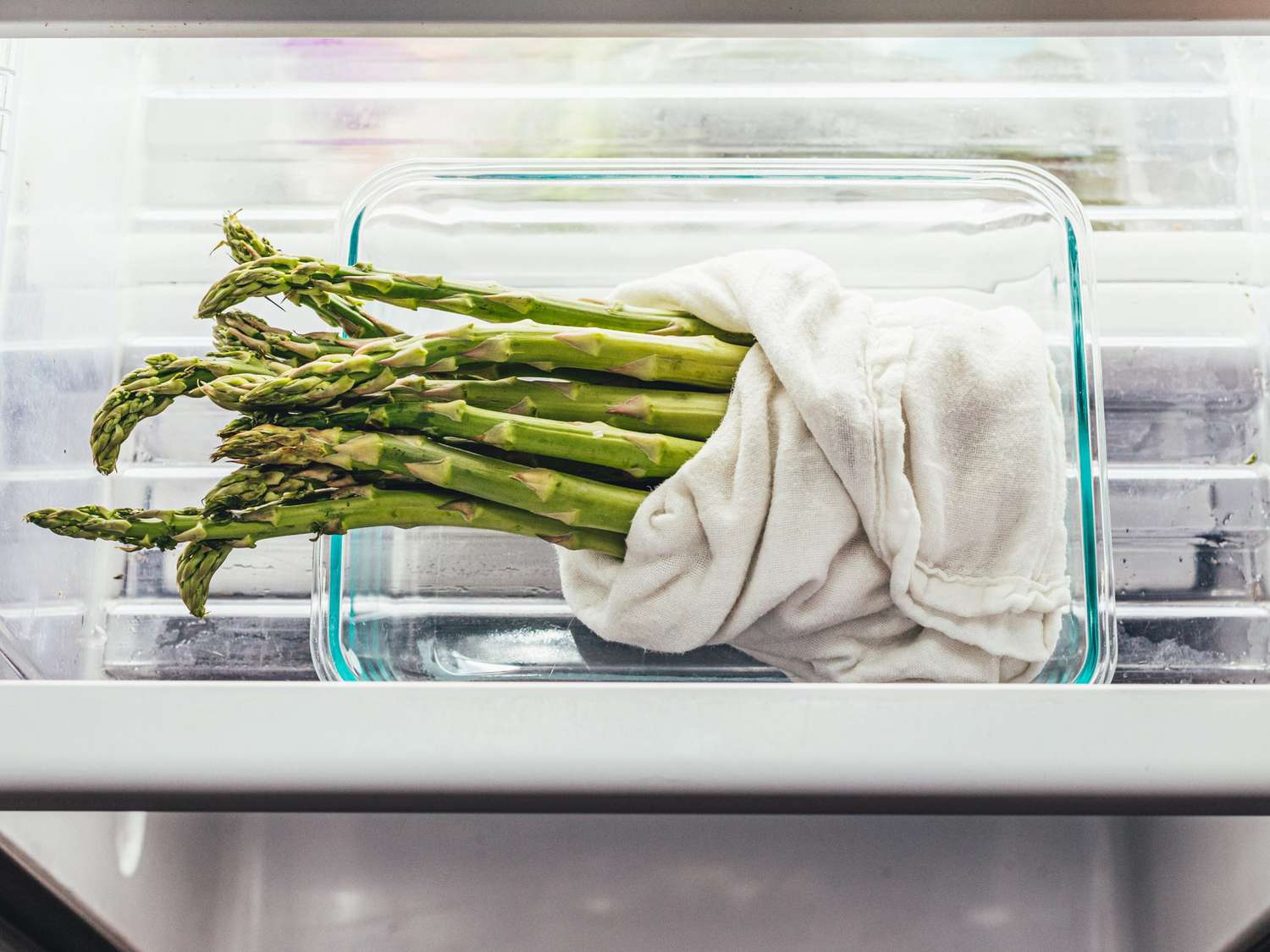

Articles
How To Store Asparagus At Home
Modified: February 23, 2024
Learn how to store asparagus at home with these helpful articles, ensuring your asparagus stays fresh and delicious for longer.
(Many of the links in this article redirect to a specific reviewed product. Your purchase of these products through affiliate links helps to generate commission for Storables.com, at no extra cost. Learn more)
Introduction
Welcome to the ultimate guide on how to store asparagus at home! Asparagus is a delicious and nutritious vegetable that is only in season for a short period of time each year. If you want to enjoy its freshness throughout the year, proper storage is essential. Whether you have picked it from your garden or bought it from the store, knowing how to store asparagus correctly will help maintain its flavor, texture, and nutritional value.
Asparagus is highly perishable and can quickly lose its quality if not stored properly. Improper storage can lead to limp, rubbery, and discolored asparagus spears that are no longer appetizing. However, with the right techniques, you can extend the shelf life of asparagus and keep it fresh for longer periods.
In this article, we will guide you through the step-by-step process of choosing fresh asparagus, preparing it for storage, and explore different methods of storing asparagus to maintain its freshness and flavor. We will provide you with helpful tips and tricks to ensure that you can enjoy delicious asparagus any time of the year.
So, let’s dive into the world of asparagus storage and discover the best ways to keep your asparagus crisp, flavorful, and ready to use whenever you crave it!
Key Takeaways:
- Choose fresh, vibrant asparagus with closed tips and firm stalks for optimal storage. Properly prepare and refrigerate or freeze to maintain its crispness and flavor, ensuring year-round enjoyment.
- Explore unique storage methods like water or paper towel to maintain asparagus’ freshness. Get creative with glass jar storage for an elegant touch. Regularly check for spoilage to savor delicious asparagus anytime.
Read more: How To Store Cooked Asparagus
Choosing Fresh Asparagus
When it comes to storing asparagus, selecting the freshest and highest quality spears is crucial. Fresh asparagus has a vibrant green color, firm stalks, and tightly closed tips. Here are some tips to help you choose the best asparagus for storage:
- Color: Look for spears that have a deep green color. Avoid any asparagus with a yellow or wilted appearance, as it indicates that it is no longer fresh.
- Texture: Gently squeeze the asparagus stalks to assess their firmness. Fresh asparagus should be firm and have a bit of resistance when pressed. Avoid any limp or soft stalks.
- Thickness: Choose asparagus with uniform thickness. Thicker spears tend to be more tender and flavorful than thin ones.
- Tips: Examine the tips of the asparagus carefully. They should be tightly closed and compact. Avoid any spears with open or flowering tips.
- Smell: Give the asparagus a gentle sniff. It should have a fresh and earthy smell. If it has a strong or unpleasant odor, it may be a sign of spoilage.
Additionally, it’s recommended to choose asparagus that has been recently harvested. The fresher the asparagus, the longer it will stay fresh during storage. If you have the opportunity, consider picking asparagus from your own garden or buying it from local farmers’ markets where you can find freshly harvested and high-quality produce.
By carefully selecting fresh asparagus, you’re setting the foundation for successful storage and ensuring that the asparagus retains its taste and texture for a longer period. Now that you know how to choose fresh asparagus let’s move on to preparing it for storage.
Preparing Asparagus for Storage
Before storing asparagus, it’s important to properly prepare it to ensure it stays fresh and flavorful. Follow these steps to prepare asparagus for storage:
- Trim the ends: Start by trimming the woody ends of the asparagus. Hold a spear at both ends and bend it gently until it snaps. The natural breaking point indicates where the tender part of the asparagus begins, and you can discard the tougher lower end.
- Wash the asparagus: Give the asparagus a gentle rinse under cold running water to remove any dirt or debris. Pat them dry with a paper towel or kitchen towel to remove excess moisture. Moisture can lead to spoilage and shorten their shelf life.
- Separate the stalks: If you have a bunch of asparagus, it’s a good idea to separate them into smaller bundles according to their thickness. This allows for better airflow and prevents overcrowding, which could result in moisture accumulation and spoilage.
Once you have prepared the asparagus, you are ready to store it using different methods depending on whether you plan to refrigerate or freeze it. Keep reading to learn about both options.
Refrigerating Asparagus
Refrigeration is one of the most common methods for storing fresh asparagus. By storing it in the refrigerator, you can extend its shelf life and maintain its freshness. Here’s how to properly refrigerate asparagus:
- Place the asparagus in a container: Take a shallow container or a resealable plastic bag and place the asparagus into it. You can also use a damp kitchen towel or paper towel to wrap the asparagus loosely. This will help prevent the asparagus from drying out.
- Store in the vegetable crisper drawer: Ideally, asparagus should be stored in the vegetable crisper drawer of your refrigerator. Set the drawer to a temperature between 32°F (0°C) and 40°F (4°C). This temperature range helps to maintain the asparagus’ freshness and prevents it from freezing.
- Use within a few days: Refrigerated asparagus should be used within three to five days for the best flavor and quality. Asparagus tends to lose its flavor and texture over time, so it’s best to consume it as soon as possible.
Remember to check the asparagus regularly for any signs of spoilage. Mold growth, sliminess, or a strong odor are indicators that the asparagus has gone bad and should be discarded.
Refrigerating asparagus is a simple and effective way to prolong its freshness, but if you want to store asparagus for an even longer period, freezing it is a great alternative. Keep reading to learn how to freeze asparagus.
Freezing Asparagus
Freezing asparagus is an excellent option if you want to store it for an extended period. Freezing helps to preserve the flavor and texture of asparagus, allowing you to enjoy it even when it’s out of season. Follow these steps to freeze asparagus:
- Blanch the asparagus: Blanching is a crucial step in freezing asparagus as it helps to preserve its color, texture, and nutrient content. Start by bringing a large pot of water to a boil. Then, carefully add the asparagus spears and blanch them for 2-3 minutes. This blanching process helps to neutralize enzymes that can cause flavor and texture changes during freezing.
- Cool the asparagus: After blanching, quickly transfer the asparagus to a bowl filled with ice water. This will rapidly cool down the spears and stop the cooking process. Allow them to sit in the ice water for the same amount of time they were blanched, around 2-3 minutes.
- Pat dry and package: Once the asparagus has cooled, carefully pat each spear dry using a clean kitchen towel or paper towel. Asparagus should be completely dry before packaging them for freezing. Place the asparagus in airtight freezer bags or containers, removing as much air as possible to prevent freezer burn.
- Label and freeze: Before placing the asparagus in the freezer, make sure to label the bags or containers with the date of freezing. This will help you keep track of their freshness. Place the asparagus in the coldest part of the freezer and allow them to freeze completely.
Properly frozen asparagus can last for up to 8-12 months in the freezer. When you’re ready to use it, remove the desired amount of asparagus from the freezer and thaw it in the refrigerator overnight or use it directly in cooked dishes without thawing.
Now that you know how to freeze asparagus, you have a versatile option for long-term storage. Whether you blanch the asparagus before freezing or choose to freeze it without blanching, frozen asparagus is a convenient ingredient to have on hand.
Continue reading to explore other creative methods of storing asparagus.
To store asparagus at home, trim the ends and place the spears upright in a jar or glass with an inch of water. Cover with a plastic bag and refrigerate for up to a week.
Read more: How To Store Asparagus
Blanching Asparagus
Blanching is an essential step in the freezing process of asparagus. It helps to preserve the color, texture, and flavor of the asparagus, making it an important technique to ensure the best quality after freezing. Here’s how to blanch asparagus:
- Prepare the asparagus: Start by trimming the woody ends of the asparagus spears. Discard the tough ends and keep the tender parts for blanching.
- Boil water: Fill a large pot with water and bring it to a vigorous boil. The pot should be large enough to accommodate the asparagus without overcrowding.
- Blanching time: Once the water is boiling, add the asparagus spears to the pot. Depending on the thickness of the asparagus, blanch them for approximately 2-3 minutes. Thinner spears may require less blanching time, while thicker ones may need a bit longer.
- Ice water bath: Immediately after blanching, using tongs or a slotted spoon, transfer the asparagus to a bowl filled with ice water. This ice water bath helps to cool down the asparagus rapidly and halt the cooking process.
- Drain and dry: After the asparagus has chilled in the ice water bath for the same amount of time it was blanched (2-3 minutes), carefully remove them and drain them on a clean kitchen towel or paper towels. Gently pat them dry to remove any excess moisture.
Blanching asparagus helps to inactivate enzymes that can cause flavor and texture changes during freezing. It also helps to maintain the vibrant green color of the asparagus. By blanching before freezing, you can ensure that your frozen asparagus maintains its quality over an extended period of time.
Now that you’ve learned how to blanch asparagus, you’re ready to store it using various methods. Keep reading to explore different ways you can store asparagus to maintain its freshness and flavor.
Storing Asparagus in Water
Storing asparagus in water is a unique method that helps to maintain its freshness and crispness for longer periods. This technique involves keeping the asparagus hydrated, similar to how you would store fresh cut flowers in a vase of water. Here’s how you can store asparagus in water:
- Trim the ends: Start by trimming the woody ends of the asparagus spears. Remove about 1-2 inches from the bottom of each spear.
- Place in a container: Fill a tall container, such as a glass or a jar, with about an inch of water.
- Arrange the asparagus: Stand the asparagus spears upright in the container, with the trimmed ends submerged in the water. Make sure the asparagus are not overcrowded and have enough space to stand upright.
- Cover and refrigerate: Loosely cover the top of the container with a plastic bag or plastic wrap. Place the container in the refrigerator and store the asparagus for up to one week.
- Change the water: Every couple of days, change the water in the container to ensure freshness. Discard the old water and replace it with fresh, cold water.
Storing asparagus in water helps to keep the spears hydrated, preventing them from drying out and wilting. This method can help to maintain the crispness and freshness of the asparagus for a longer period compared to traditional refrigeration.
It’s important to note that even when stored in water, asparagus should be used within a week for the best flavor and quality. Keep an eye out for any signs of spoilage, such as sliminess, mold growth, or a foul smell, and discard any asparagus that shows these signs.
Now that you know how to store asparagus in water, let’s explore another method of storing asparagus using a paper towel.
Storing Asparagus in a Paper Towel
Storing asparagus in a paper towel is a simple but effective method to maintain its freshness and prevent excess moisture. This technique helps to absorb any excess moisture from the asparagus, keeping it crisp and extending its shelf life. Here’s how you can store asparagus in a paper towel:
- Trim the ends: Start by trimming the woody ends of the asparagus spears. Discard the tough ends and keep the tender parts for storage.
- Dampen a paper towel: Take a paper towel and dampen it slightly with water. Make sure it is not soaking wet, as excessive moisture can cause the asparagus to rot.
- Wrap the asparagus: Place the asparagus bunch on the dampened paper towel and gently wrap the towel around the spears. Make sure the asparagus is fully covered, and the paper towel is wrapped snugly.
- Transfer to a resealable bag: Once the asparagus is wrapped in the paper towel, transfer it to a resealable plastic bag. Seal the bag, leaving a small opening for air circulation.
- Refrigerate and use within a few days: Place the bag with the wrapped asparagus in the refrigerator. The asparagus can be stored this way for up to five days.
Storing asparagus in a paper towel helps to absorb excess moisture and prevent the asparagus from becoming damp, which can lead to spoilage. The paper towel creates a slightly humid environment, similar to the natural conditions of the asparagus, keeping it fresh and crisp.
Remember to check the asparagus regularly for any signs of spoilage, such as mold, sliminess, or a foul odor. Remove any spoiled spears to prevent them from affecting the rest of the asparagus.
Now that you know how to store asparagus in a paper towel, let’s explore another method using a glass jar.
Storing Asparagus in a Glass Jar
Storing asparagus in a glass jar is a creative and visually appealing way to keep it fresh for a longer period. This method helps to maintain the moisture and crispness of the asparagus while adding a touch of elegance to your refrigerator. Here’s how you can store asparagus in a glass jar:
- Trim the ends: Start by trimming the woody ends of the asparagus spears. Remove about 1-2 inches from the bottom of each spear.
- Prepare the jar: Clean and dry a glass jar that is tall enough to accommodate the asparagus spears without bending or breaking them.
- Add water to the jar: Fill the glass jar with about an inch or two of water.
- Place the asparagus in the jar: Stand the asparagus spears upright in the jar, with the trimmed ends submerged in the water. Arrange them neatly to ensure they are not overcrowded.
- Cover the jar: Place a plastic bag or plastic wrap loosely over the top of the jar to create a mini-greenhouse effect, trapping a bit of humidity inside.
- Refrigerate and use within a week: Place the jar with the asparagus in the refrigerator and store it for up to one week. Check periodically for any signs of spoilage and remove any damaged or wilted spears.
Storing asparagus in a glass jar not only helps to maintain its freshness and crispness but also adds a touch of elegance to your refrigerator. You can even use this method for displaying asparagus on your kitchen counter if you prefer. Just make sure to keep the glass jar away from direct sunlight and heat to prevent the asparagus from wilting.
Remember to change the water in the jar every couple of days to maintain freshness. Discard any discolored or slimy spears and replace them with fresh ones to ensure the asparagus stays in optimal condition.
Now that you know how to store asparagus in a glass jar, you can enjoy its freshness and vibrant display every time you open the refrigerator.
Read more: How To Store Fresh Asparagus
Conclusion
Congratulations! You’ve now learned the best techniques for storing asparagus at home to maintain its freshness, flavor, and nutritional value. Whether you choose to refrigerate or freeze your asparagus, proper storage is essential to enjoy its delicious taste all year round.
When selecting asparagus, opt for spears with vibrant green color, firm stalks, tightly closed tips, and a fresh smell. Properly preparing the asparagus by trimming the ends and washing it ensures optimal storage conditions.
If you decide to refrigerate asparagus, store it in a container with a bit of water or wrapped in a damp paper towel. This helps to maintain its moisture and crispness for a few days in the refrigerator. Alternatively, if you prefer to extend the shelf life of asparagus, freezing is an excellent option. Blanch the asparagus before freezing to preserve its texture and color.
For a unique approach, consider storing asparagus in water or wrapping it in a slightly damp paper towel. These methods help to maintain moisture levels and prevent wilting and drying out.
Lastly, storing asparagus in a glass jar adds an elegant touch to your refrigerated display while keeping the asparagus fresh and crisp. Just remember to change the water regularly to prevent any bacterial growth.
Remember, regardless of the method you choose, it’s important to regularly check the asparagus for signs of spoilage. Discard any spears that are slimy, discolored, or have a foul smell.
Now armed with these storage techniques, you can enjoy the delightful taste of asparagus whenever you desire. So go ahead, buy or harvest fresh asparagus, and keep it in optimal condition using these storage methods.
Happy storing and savoring your delicious asparagus all year round!
Frequently Asked Questions about How To Store Asparagus At Home
Was this page helpful?
At Storables.com, we guarantee accurate and reliable information. Our content, validated by Expert Board Contributors, is crafted following stringent Editorial Policies. We're committed to providing you with well-researched, expert-backed insights for all your informational needs.
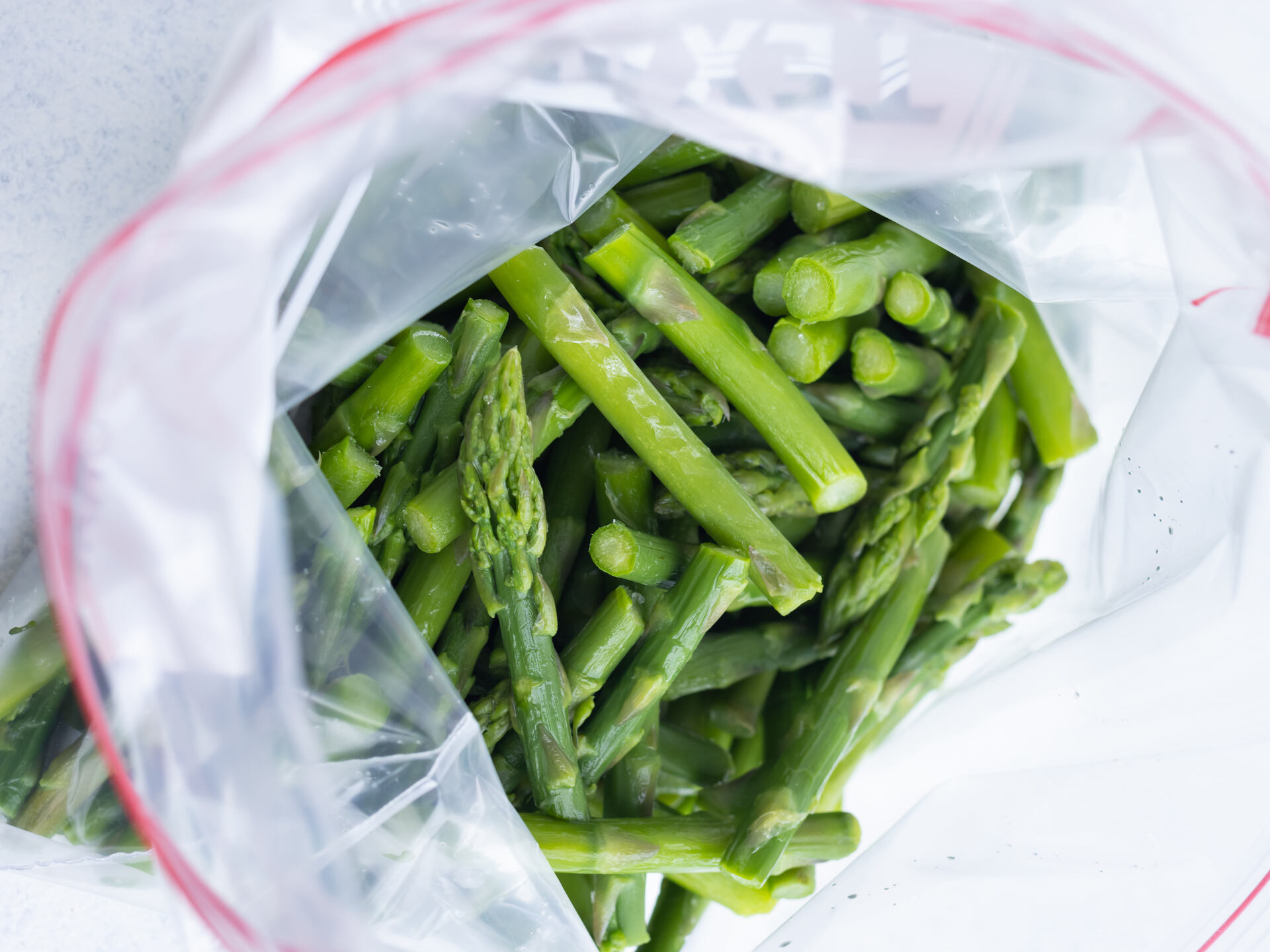

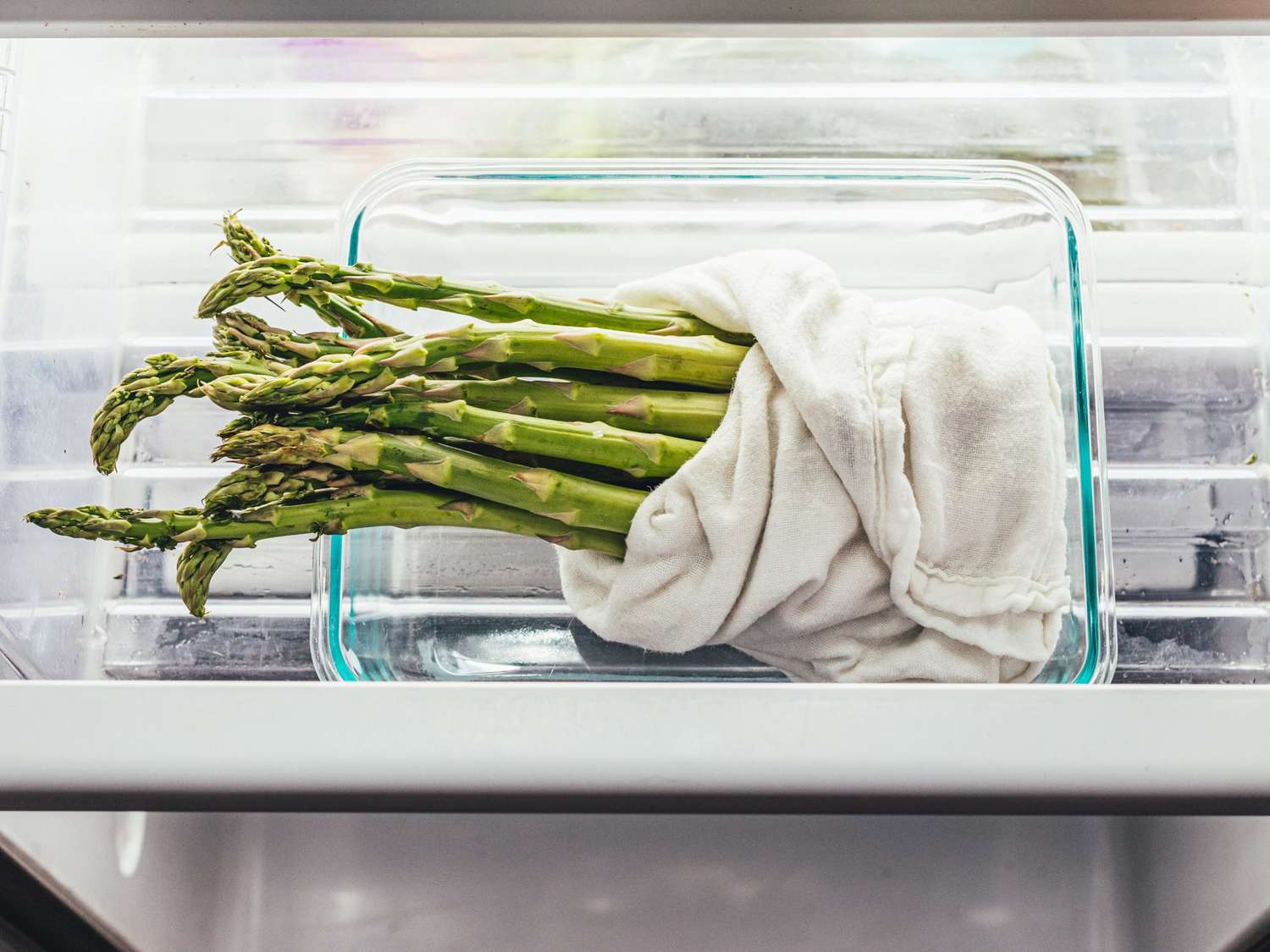




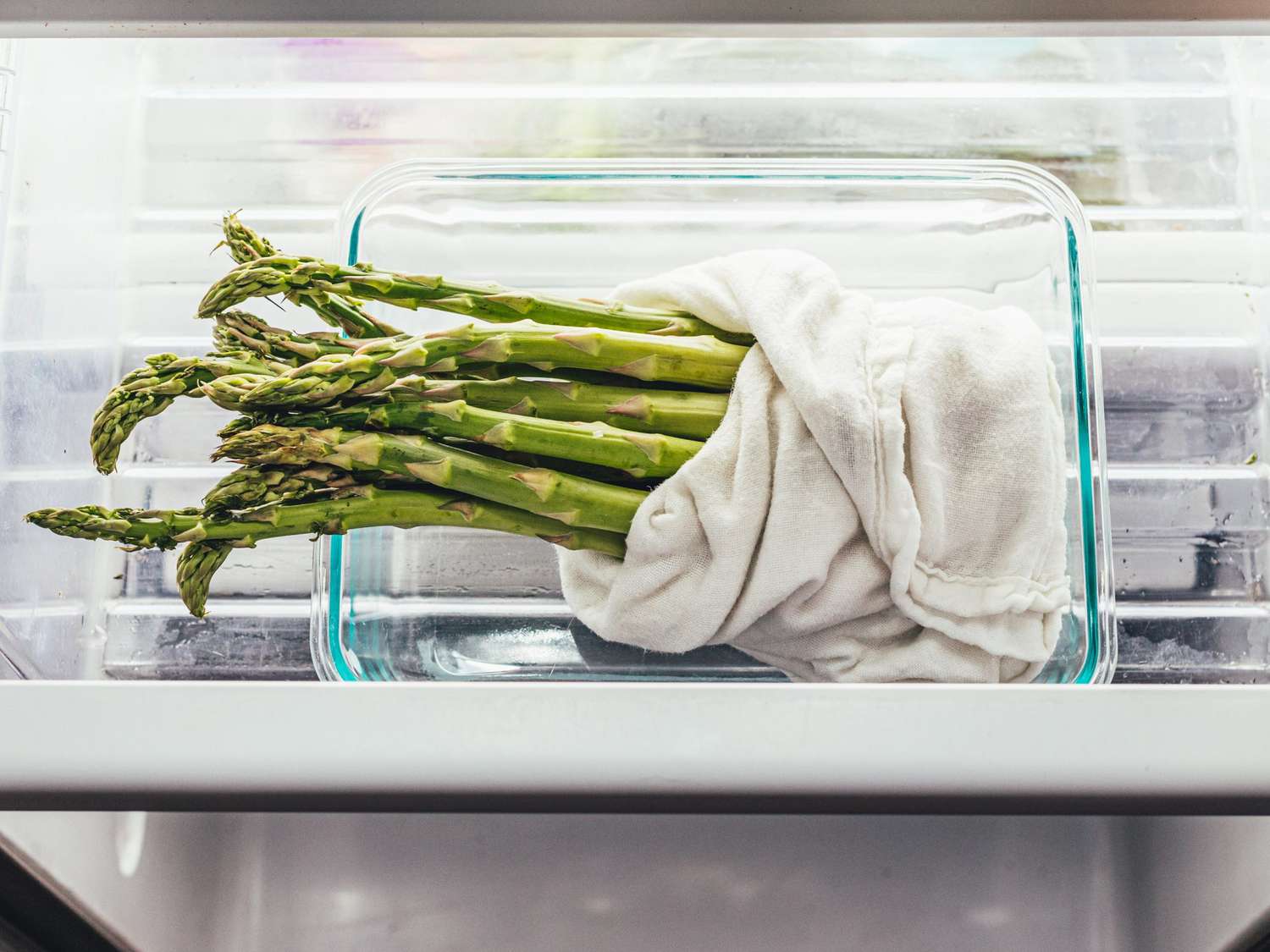
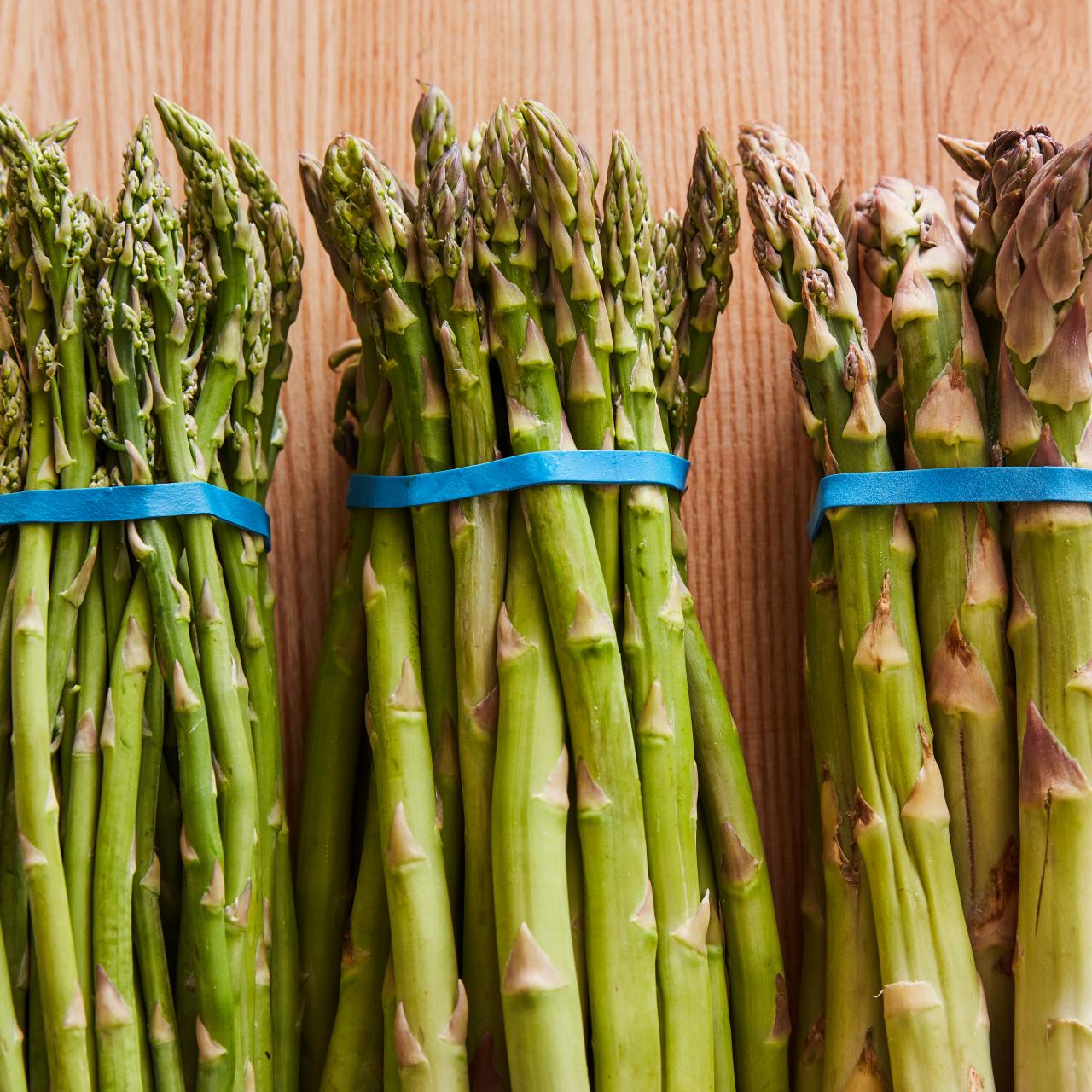
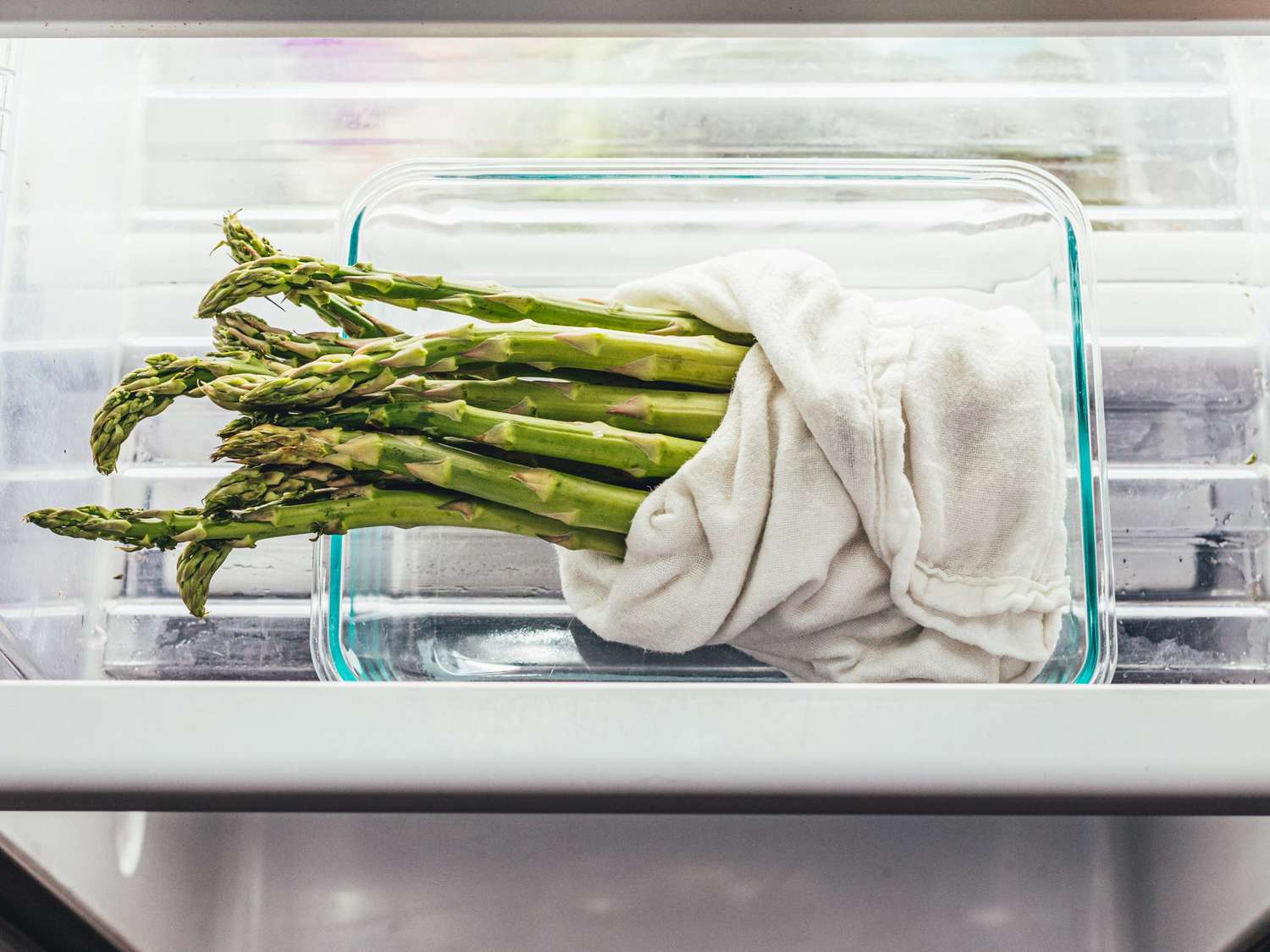

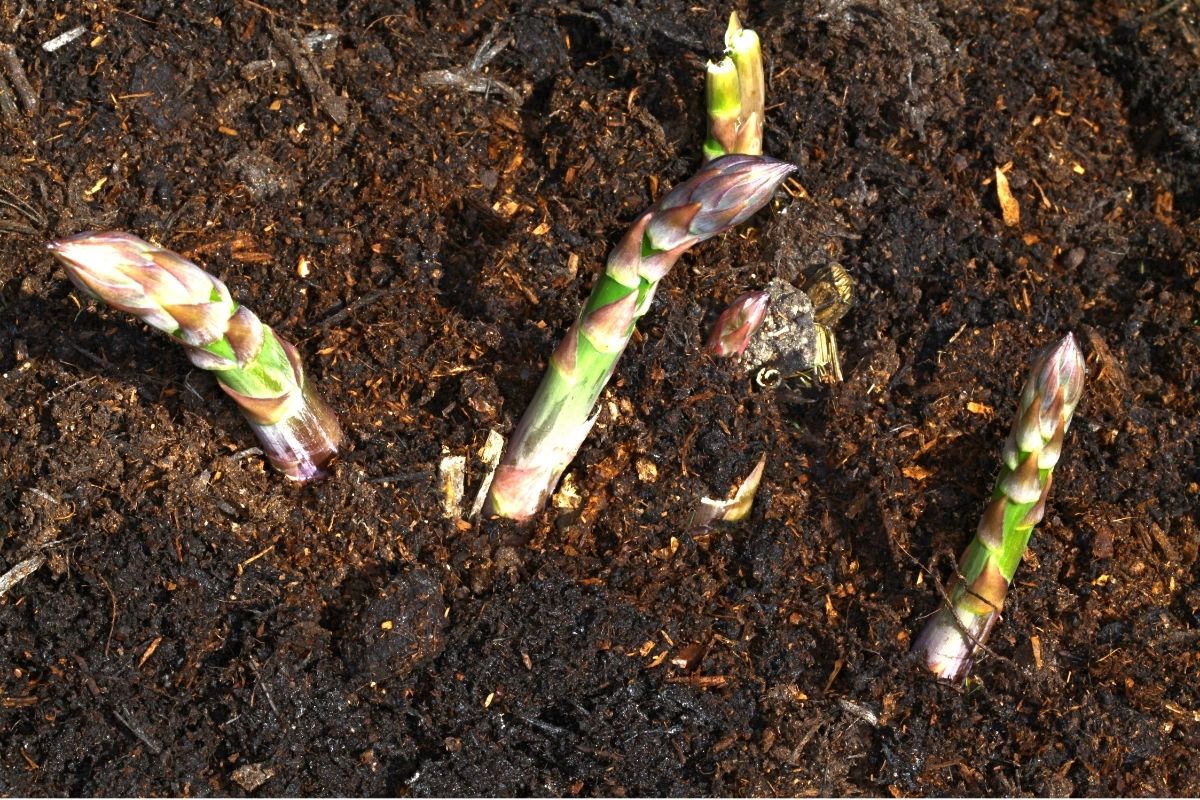
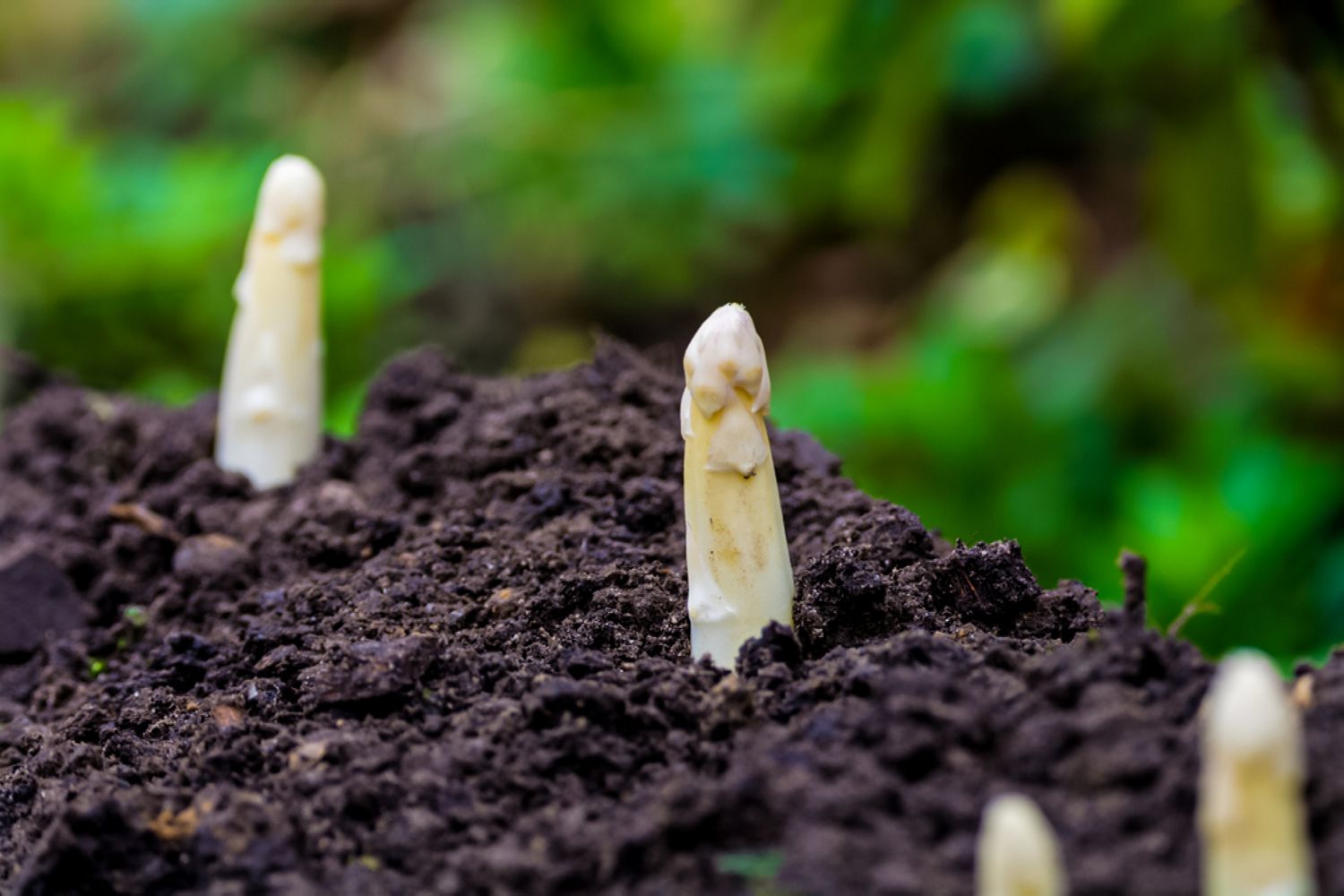

0 thoughts on “How To Store Asparagus At Home”